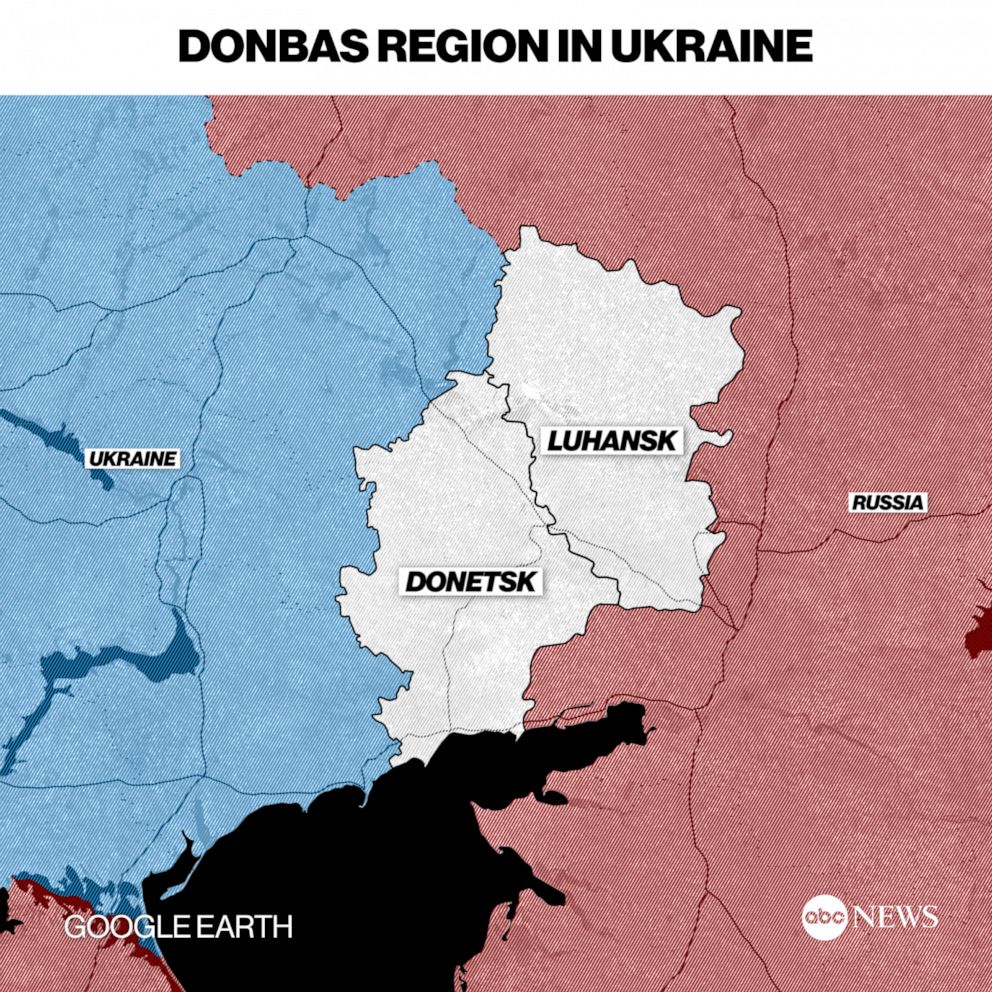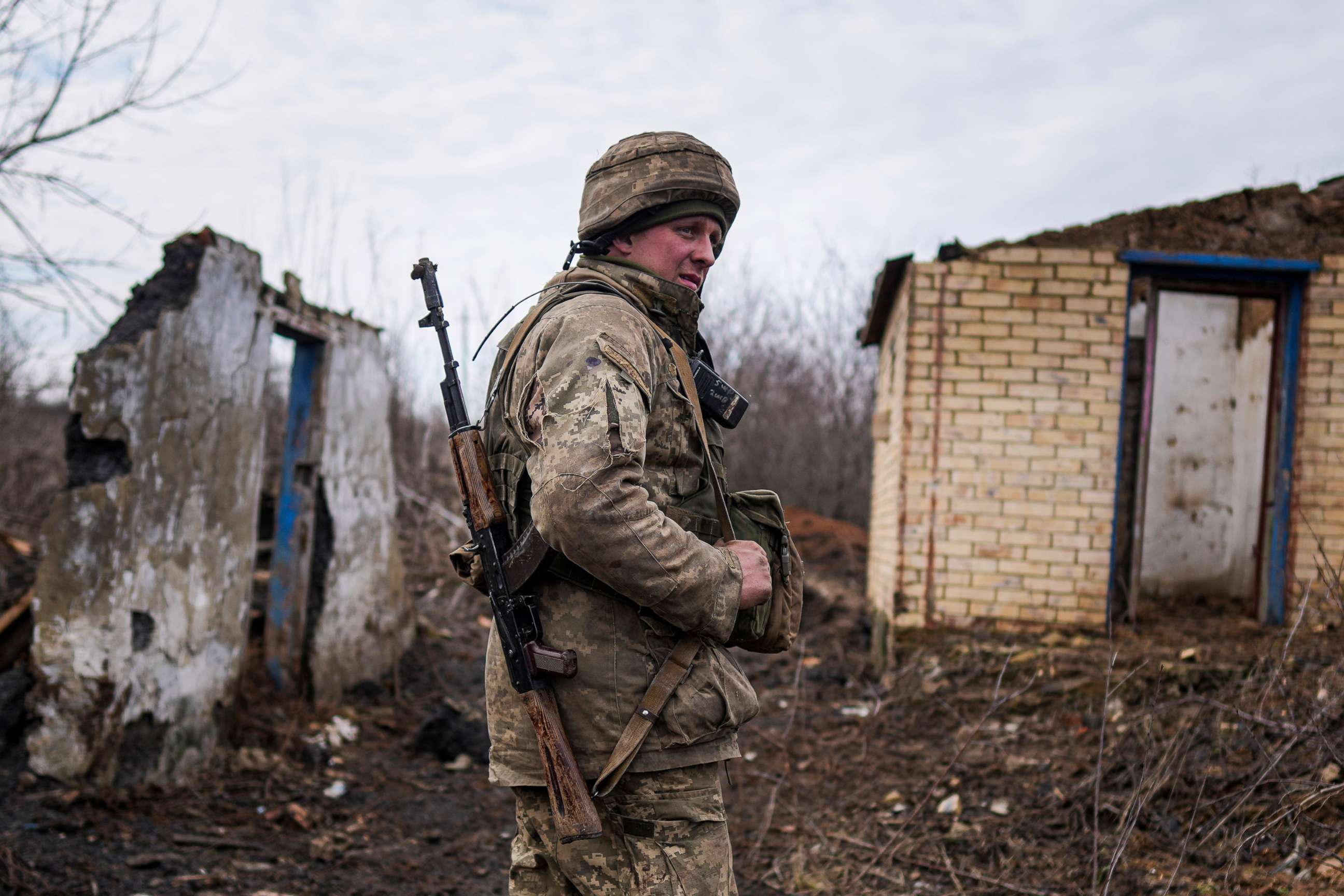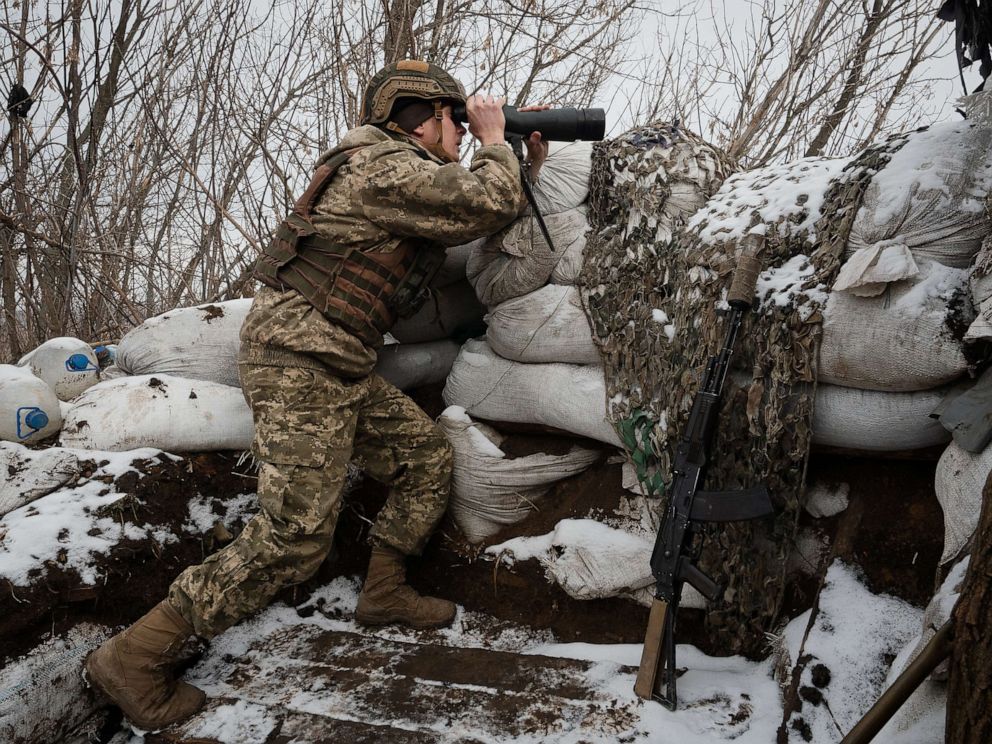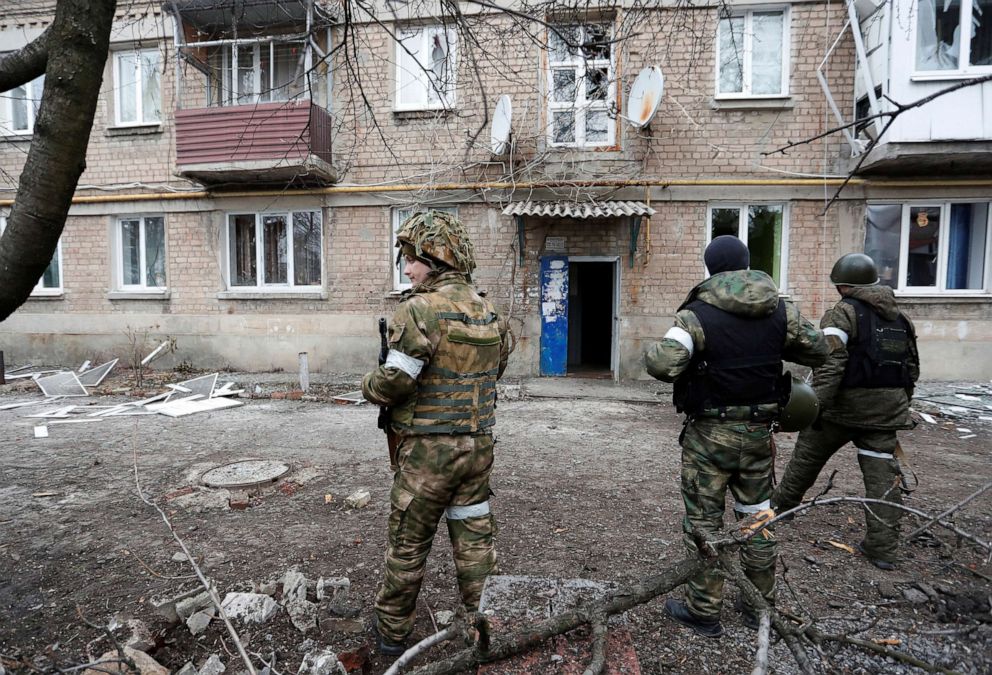What are the Ukraine 'separatist' regions at the crux of the Russian invasion
"The most important thing about that area is that it has caused this war."
The Donbas region of eastern Ukraine was once known for its coal and steel manufacturing, but thanks to a long-running conflict there fanned by Russia, it has played an important role in the Kremlin’s ongoing invasion.
The Donbas contains two provinces, Donetsk and Luhansk, that touch the Russian border and since 2014 have been controlled by two puppet separatist governments that Moscow armed and helped establish.
Russian President Vladimir Putin last week recognized the independence of the self-proclaimed People's Republics of Donetsk and Luhansk, saying he sent Russian troops into Ukraine to keep the peace at the request of rebels in the region.
But experts on the long-running conflict said Moscow largely created the separatist movement and is now using that as grounds for the invasion.
"Those two regions have a lot of people who are not just Russian citizens, but also sympathetic to Russia still, unlike most of the country," said ABC News contributor Steve Ganyard, a retired U.S. Marine colonel and former deputy assistant secretary of state. "So the reason that the Russians were able to sort of maintain puppet governments there is that they had people who are sympathetic to Russia and to their cause."

During the 2014 Ukrainian revolution, which toppled the Russian-friendly regime of former Ukrainian President Viktor Yanukovych, Russia responded by annexing Ukraine's Crimean Peninsula and throwing its support behind an insurgency in Donbas.
Russia-backed fighters, led by former Russian intelligence officer Igor Girkin and supported by Russian special forces, seized several administrative buildings in Donbas, setting off the conflict.
'People's republics'
In April 2014, the Russian-backed rebels in Donetsk and Luhansk proclaimed the creation of "people's republics" and months later held a popular and unrecognized referendum to declare independence from Ukraine in an effort to become part of Russia, experts said.
"Russia sent operatives in, both military and political, to create the appearance of separatist movements, and then they sort of brought them to life. These movements would take over city halls in the region, and we'd see pictures of Russian special forces with them," Matthew Schmidt, a national security and political science professor at the University of New Haven, told ABC News.
Ukraine used its military to try to regain control of the region, and as the Russian-backed insurgency faltered, Moscow sent its regular forces in to prop them up, covertly sending tank regiments and other units into battle.
About 14,000 people have been killed in the eight years of fighting in Donbas, and more than a million residents of the area have been displaced since the fighting broke, according to the Ukrainian government.

Amid the fighting, Malaysia Airlines Flight 17 was shot down over eastern Ukraine on July 17, 2014, killing 298 people aboard, most of them from the Netherlands. An international investigation determined the jet was hit by a Russia-supplied missile fired from the rebel-controlled territory in Ukraine. Russia denied any involvement in the incident.
In early 2015, with Russian troops inflicting heavy damage on Ukraine, Kyiv agreed to a peace deal known as the "Minsk agreements." Although the deal ended large-scale fighting, the conflict continued to smolder with both sides dug in along trenches.
"It turned into sort of like a World War I-kind of Western Front stalemate, and it's been that way since 2015," Ganyard said, adding that prior to the invasion, indiscriminate shelling occurred on both sides of the conflict.
Schmidt added, "The most important thing about that area is that it has caused this war, or it is the justification for this war."
'Minsk agreements'
The 2015 Minsk agreements called for Ukraine to reintegrate the separatist regions by giving them broad autonomy enshrined in its constitution. The Kremlin hoped that by doing so it would create a permanent pro-Russian lever of influence within Ukraine’s government that would act as a veto on the country joining the European Union or NATO.
Ukraine refused to fulfill that part of the Minsk deal while Russian troops remained on the separatists’ territory, seeing the separatist governments as puppets of the Kremlin. Any possibility of solving the conflict was made far more difficult because the Kremlin refused to even acknowledge its troops were in the separatist areas, falsely claiming the conflict was entirely an internal civil war in Ukraine, the experts said.

Meanwhile, Russia continued to falsely accuse Ukraine of waging a "genocide" against Russian speakers in the separatist areas.
The Kremlin and the separatist proxies have drawn on a conception of the region dating from the 19th century when it was part of an area known as "New Russia."
"So, that's where Putin is starting, and he's saying essentially these people are majority Russian speakers and if you go back to the 19th century they are really part of Russia or should be. And he's used that term New Russia before," Schmidt said.
But the Ukrainian government counters that Donetsk and Luhansk have been legally recognized as part of Ukraine dating back to 1917. During a referendum in 1991, a majority of people in the regions voted in favor of Ukrainian independence.
A barrage of fake reports
In the run-up to the current invasion, Russia manufactured a pretext for it by claiming Ukraine was preparing to attack the separatist regions, backing it with a barrage of fake reports and staged videos showing supposed Ukrainian outrages that were quickly debunked by independent researchers.
The separatist authorities also ordered mass evacuations of civilians to create the illusion of a large-scale humanitarian crisis.
After Russia recognized the "republics," the puppet governments appealed for help from Russia, creating a false pretext for the Kremlin to invade. Putin accused Ukraine of failing to implement the Minsk agreements to justify Russia recognizing the separatist "republics" as independent.

By recognizing Donetsk and Luhansk as independent republics, Putin is saying that "Ukraine is illegitimate in claiming them," Schmidt said
"And when he claims them as independent republics, then they are -- in his mind and in Russian legal theory at that point -- capable of asking a neighboring country to assist," Schmidt said
When the fighting stopped in 2015, the separatist "republics" only held around a third of the territory of Donbas that they claim should belong to them. As part of Russia’s invasion, it has launched a full-scale offensive from the separatist areas that it claims is to retake that territory.
Many experts say Russia is using the separatist conflict as a pretext for forcing Ukraine to concede to Russian demands that it never join NATO and remain part of Moscow’s orbit.
The two separatist regions -- likely enlarged -- could be important in any eventual peace agreement to end the fighting.
Ganyard said that while Donetsk and Luhansk have been key to the start of the Russian invasion, they are also a vital "piece of the puzzle" to ending it.
"It's one thing to invade a country; it's another thing to hold it -- and it's particularly difficult if you don't have the support of the indigenous people," Ganyard said. "If Ukraine has to give up the Donbas, it's probably not a deal killer. I think that might be part of the deal just to give Putin something to allow him to save face."




